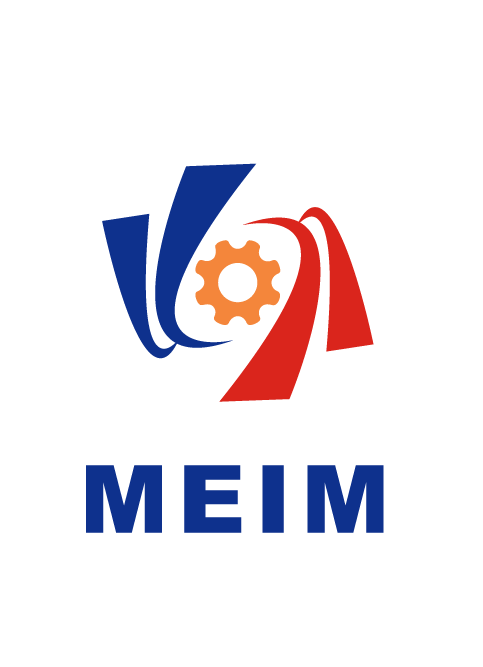
Speakers
Keynote Speakers
Prof. Shyi-Ming Hen
National University of Science and Technology, China

Title: Applications of Eigenvalues and Eigenvectors in Data Mining
Abstract: Applied linear algebra methods play an important role in data science. Eigenvalues and eigenvectors are widely used in efficient algorithms for data mining, with applications in dimensionality reduction, image processing, facial recognition, and Internet search engine. In this study, we mainly discuss efficient algorithms in data mining field. Principal Component Analysis (PCA) uses eigenvalues and eigenvectors to re-express data in the form of a small number of actual data points. PCA is widely applied in image compression and facial recognition. PageRank, the Google search engine algorithm, is an eigenvector of a transformation matrix corresponding to the largest eigenvalue. The best solution for the decision vector for network classification is the feature vector of the Laplacian matrix corresponding to the second smallest eigenvalue
Experience: Professor Shyi-Ming Chen received the Ph.D. degree in Electrical Engineering from National Taiwan University, Taipei, Taiwan, in June 1991. He is a Chair Professor in the Department of Computer Science and Information Engineering, National Taiwan University of Science and Technology, Taipei, Taiwan. From August 2007 to July 2010, he was the Dean of the College of Electrical Engineering and Computer Science, Jinwen University of Science and Technology, New Taipei City, Taiwan. From August 2011 to July 2012, he was the Vice President of the National Taichung University of Education, Taichung, Taiwan. He was the President of the Taiwanese Association for Artificial Intelligence (TAAI) from January 2005 to January 2009. He was the President of the Taiwanese Association for Consumer Electronics (TACE) from December 2008 to December 2012 and from December 2014 to December 2016. He has published more than 500 papers in referred journals, conference proceedings and book chapters. His research interests include Fuzzy Systems, Intelligent Systems, Knowledge-Based Systems, Neural Networks, Data Mining, Information Retrieval, and Genetic Algorithms.
Prof. Shyi-Ming Hen
National University of Science and Technology, China

Title: Applications of Eigenvalues and Eigenvectors in Data Mining
Abstract: Applied linear algebra methods play an important role in data science. Eigenvalues and eigenvectors are widely used in efficient algorithms for data mining, with applications in dimensionality reduction, image processing, facial recognition, and Internet search engine. In this study, we mainly discuss efficient algorithms in data mining field. Principal Component Analysis (PCA) uses eigenvalues and eigenvectors to re-express data in the form of a small number of actual data points. PCA is widely applied in image compression and facial recognition. PageRank, the Google search engine algorithm, is an eigenvector of a transformation matrix corresponding to the largest eigenvalue. The best solution for the decision vector for network classification is the feature vector of the Laplacian matrix corresponding to the second smallest eigenvalue
Experience: Professor Shyi-Ming Chen received the Ph.D. degree in Electrical Engineering from National Taiwan University, Taipei, Taiwan, in June 1991. He is a Chair Professor in the Department of Computer Science and Information Engineering, National Taiwan University of Science and Technology, Taipei, Taiwan. From August 2007 to July 2010, he was the Dean of the College of Electrical Engineering and Computer Science, Jinwen University of Science and Technology, New Taipei City, Taiwan. From August 2011 to July 2012, he was the Vice President of the National Taichung University of Education, Taichung, Taiwan. He was the President of the Taiwanese Association for Artificial Intelligence (TAAI) from January 2005 to January 2009. He was the President of the Taiwanese Association for Consumer Electronics (TACE) from December 2008 to December 2012 and from December 2014 to December 2016. He has published more than 500 papers in referred journals, conference proceedings and book chapters. His research interests include Fuzzy Systems, Intelligent Systems, Knowledge-Based Systems, Neural Networks, Data Mining, Information Retrieval, and Genetic Algorithms.
Invited Speakers
Prof. Shyi-Ming Hen
National University of Science and Technology, China

Title: Applications of Eigenvalues and Eigenvectors in Data Mining
Abstract: Applied linear algebra methods play an important role in data science. Eigenvalues and eigenvectors are widely used in efficient algorithms for data mining, with applications in dimensionality reduction, image processing, facial recognition, and Internet search engine. In this study, we mainly discuss efficient algorithms in data mining field. Principal Component Analysis (PCA) uses eigenvalues and eigenvectors to re-express data in the form of a small number of actual data points. PCA is widely applied in image compression and facial recognition. PageRank, the Google search engine algorithm, is an eigenvector of a transformation matrix corresponding to the largest eigenvalue. The best solution for the decision vector for network classification is the feature vector of the Laplacian matrix corresponding to the second smallest eigenvalue
Experience: Professor Shyi-Ming Chen received the Ph.D. degree in Electrical Engineering from National Taiwan University, Taipei, Taiwan, in June 1991. He is a Chair Professor in the Department of Computer Science and Information Engineering, National Taiwan University of Science and Technology, Taipei, Taiwan. From August 2007 to July 2010, he was the Dean of the College of Electrical Engineering and Computer Science, Jinwen University of Science and Technology, New Taipei City, Taiwan. From August 2011 to July 2012, he was the Vice President of the National Taichung University of Education, Taichung, Taiwan. He was the President of the Taiwanese Association for Artificial Intelligence (TAAI) from January 2005 to January 2009. He was the President of the Taiwanese Association for Consumer Electronics (TACE) from December 2008 to December 2012 and from December 2014 to December 2016. He has published more than 500 papers in referred journals, conference proceedings and book chapters. His research interests include Fuzzy Systems, Intelligent Systems, Knowledge-Based Systems, Neural Networks, Data Mining, Information Retrieval, and Genetic Algorithms.
Prof. Shyi-Ming Hen
National University of Science and Technology, China

Title: Applications of Eigenvalues and Eigenvectors in Data Mining
Abstract: Applied linear algebra methods play an important role in data science. Eigenvalues and eigenvectors are widely used in efficient algorithms for data mining, with applications in dimensionality reduction, image processing, facial recognition, and Internet search engine. In this study, we mainly discuss efficient algorithms in data mining field. Principal Component Analysis (PCA) uses eigenvalues and eigenvectors to re-express data in the form of a small number of actual data points. PCA is widely applied in image compression and facial recognition. PageRank, the Google search engine algorithm, is an eigenvector of a transformation matrix corresponding to the largest eigenvalue. The best solution for the decision vector for network classification is the feature vector of the Laplacian matrix corresponding to the second smallest eigenvalue
Experience: Professor Shyi-Ming Chen received the Ph.D. degree in Electrical Engineering from National Taiwan University, Taipei, Taiwan, in June 1991. He is a Chair Professor in the Department of Computer Science and Information Engineering, National Taiwan University of Science and Technology, Taipei, Taiwan. From August 2007 to July 2010, he was the Dean of the College of Electrical Engineering and Computer Science, Jinwen University of Science and Technology, New Taipei City, Taiwan. From August 2011 to July 2012, he was the Vice President of the National Taichung University of Education, Taichung, Taiwan. He was the President of the Taiwanese Association for Artificial Intelligence (TAAI) from January 2005 to January 2009. He was the President of the Taiwanese Association for Consumer Electronics (TACE) from December 2008 to December 2012 and from December 2014 to December 2016. He has published more than 500 papers in referred journals, conference proceedings and book chapters. His research interests include Fuzzy Systems, Intelligent Systems, Knowledge-Based Systems, Neural Networks, Data Mining, Information Retrieval, and Genetic Algorithms.

核对信息:
1、报告嘉宾是非常重要的栏目,确定嘉宾后需要将嘉宾的信息尽可能多的填写,最好能结合会议主题凸显出嘉宾的优势,让其为会议宣传做到增色的作用。
2、可考虑加入往届的知名报告嘉宾的展示Speaker Gallery-- Keynote Speakers of Past Sessions。
3、检查栏目的细节问题,请将字体设置黑色且两端对齐。
字体黑色的设置:选择文本,点击功能区的“A”选择黑色字体,那么页面显示出来的字就是清晰的黑色,否则则是灰色。
两端对齐设置:选择文本,点击鼠标右键,选择“段落格式”最后选择“两端对齐”即可。